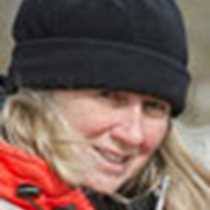Bransfield Strait and King George Island
Life is full of surprises when we open our eyes and minds to accept them. And so it is that it is an expedition we have chosen to embark upon. There is no set itinerary, no day-to-day or minute-by-minute plan, just a feeling of exhilaration knowing that every morning and every step of the way leads us to discoveries, both large and small. No matter where one is, is there a predictable outcome to the day?
A weather forecast is simply an hypothesis, an educated guess as to whether the sun will shine or the rain will fall but there is no guarantee that when the curtains are drawn on the morn that one or the other will be there. Today we awoke with a hazy sky that parted rapidly turning the water mercurial and the clouds to silvery puffs. Misty exhalations of cetaceans rose like fireworks here and there attracting our attention to these passing humpback whales. As fulmars gracefully drifted by and pintados swirled in ever changing patterns we somewhat casually noted that the sun was not where we had expected it to be. Yes, it was still in the east but we were traveling north. A change of plans, unexpected, but yet expected too as it was adventure we had signed up for.
We can learn a lot from our feathered friends, the penguins we have met. It is the gentle gentoo, the flexible one of the lot that has adjusted most rapidly to changes in their world. The picky eaters, Adélie and chinstrap too, are losing the race, their numbers here on the Antarctic peninsula declining dramatically. There must be a lesson there. Can we lower our blood pressure, increase our life expectancy by simply adapting unquestioningly to change?
Fog engulfed the islands of Nelson and King George as we worked our way into Maxwell Bay. Only pale silhouettes splotched by snowy patches gave any indication of their presence. But at the shore we were greeted by a riot of color. Three communities dwelt side-by-side in perfect harmony. Fresh white paint and royal blue roofs marked the Chilean Naval Station, its personnel proud of their mission to aid in the conservation of Antarctica and to support the safety of navigation in this unpredictable world. Its neighbor, Base Presidente Eduardo Frei Montalva leaned to orange for its colors. Operated by the Chilean army this town housed hospital, school and shop as well as the airborne units to ferry scientists about. Above it on a cuesta overlooking both base and airstrip, a blue and yellow chapel stood next to a signpost to everywhere including Beijing and the Faroe Islands. Another chapel dominated the skyline above the valley, its architecture denoting another part of the world. Part of Russia’s Bellingshausen Station, the Russian Orthodox Church was an impressive sight. Hosts from all three countries welcomed us cordially inviting us to explore and to learn of their contribution to the advancement of science here in Antarctica.
At sea again as night falls we head to bed. Tomorrow we awake once more, ready to explore.




